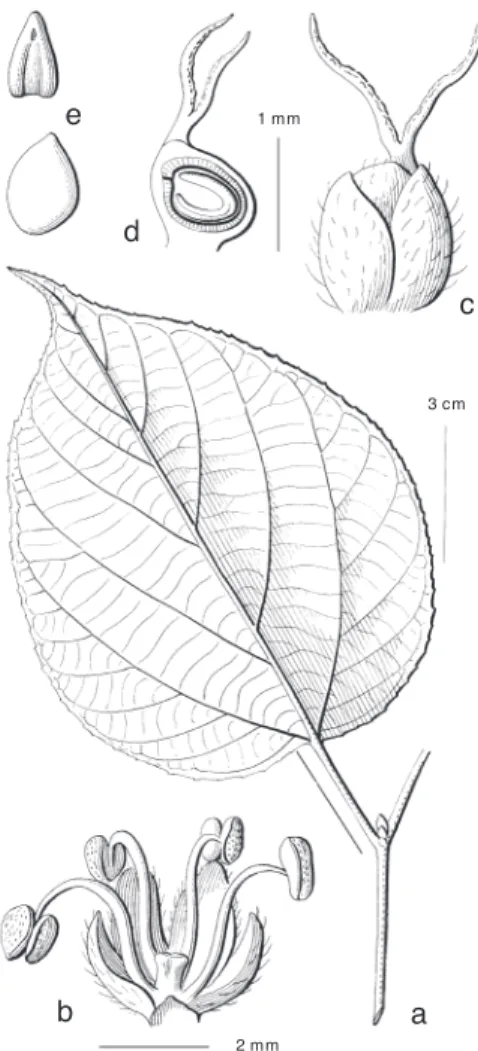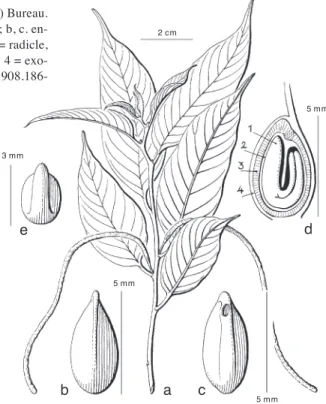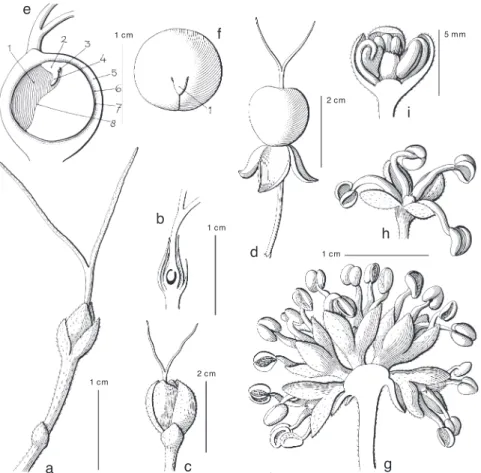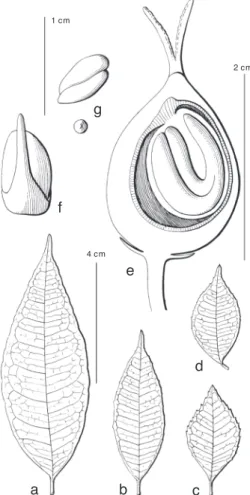Fruits — The distribution of the family suggests that the depressing drupe may be the basic fruit type of the Moraceae (Berg 1977). In the majority of Moraceae, the fruits (and seeds) are enclosed in fleshy structures consisting of connate perianths and interfloral bracts (Artocarpus and related genera), or else adnate to the receptacle (Hullettia), or enclosed in fleshy receptacles (Ficus).
Morus macroura Miq
Staminate inflorescences axillary (often in the axils of scales at the base of new shoots), solitary or paired, spicate (or racemose); stem 0.4-1.5 cm long, puberulous; spike (1–)4–8 cm long;. Distribution — The genus includes two species, one in Malesia and the other in Madagascar.
Bleekrodea insignis Blume
Stamen flowers several to one (or lacking), pedicellate; petals 4 or 5, clasping in the bud; stamens 4 (or 5), bent in bud. Pistillate inflorescences solitary on up to 4 cm long leafless branches, or at the base of leaf axils, capitate; stem 0.3-1 cm long, slightly puberulous to tomentose;.
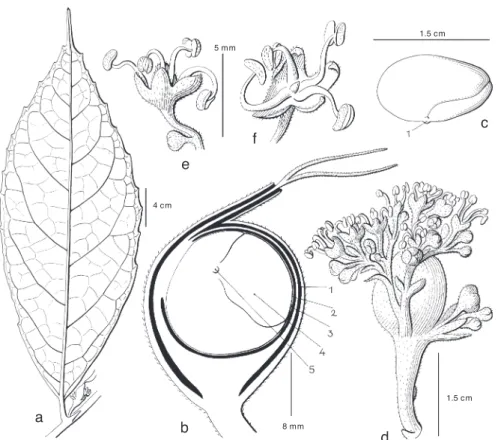
Broussonetia luzonica (Blanco) Bureau
Leaves distich; lamina subovate to ovate, 6-17 x 2.5-6 cm, ± asymmetric, chartaceous, apex acute to subacute, base rounded to obtuse or to subcordate, margin entire; Surface sparsely puberulous, smooth; lower surface sparsely to densely puberulous, tomentose on the veins; midrib impressed above, lateral veins 7-12 pairs, tertiary venation scalariform; petiole 0.6–1.5 cm long, sparsely to densely puberulous to tomentose; stipules narrowly ovate, 0.3–. Pistillate inflorescences axillary, solitary, capitate; peduncle 0.6-1 cm long, puberulous to tomentellous; head spherical, 0.4-0.7 cm diam.; perianth c.
Broussonetia papyrifera (L.) Vent
Inflorescences bisexual (or unisexual), in pairs or solitary in the axils of the leaves, short branched cymose or spiky, abaxial without flowers. Morphology — The genus is similar to Bleekrodea in its bisexual inflorescences and dehiscent drupes.
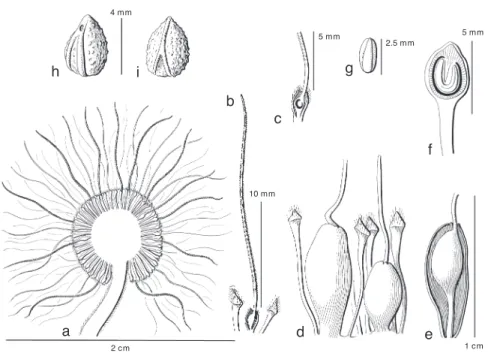
Fatoua villosa (Murray) Nakai
Pistillate inflorescences spherical; flowers free or convoluted; petals free or connate, cross-shaped, saturated with the bud; Distribution - The genus includes eleven species, ten of which occur in the tropics (seven in Asia, one in Africa and two in the Neotropics) and one in North America.
Maclura cochinchinensis (Lour.) Corner
Pistillate inflorescences axillary, paired or solitary, capitate; peduncle 0.4–1.2 cm long, puberulous to tomentose; head spherical, 0.4-0.6 cm diam.; flowers basally connate; perianth c. Pistillate inflorescences axillary, paired or solitary, one-flowered (or bi-flowered); stem 0.4-1.5 cm long, minutely whitish puberulous; leaf blades 2-2.5 mm long, minutely puberulous, in fruit 5-8 mm long, reflexed; ovary c.
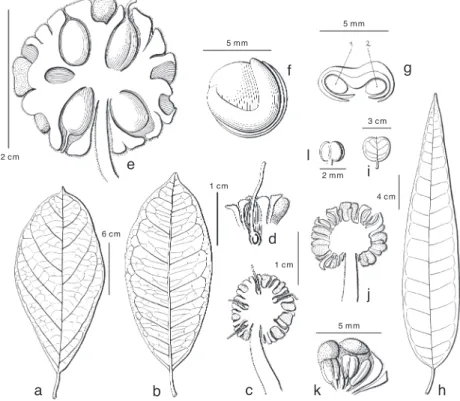
Streblus celebensis C.C. Berg
This section is clearly concentrated in the eastern part of the genus' range. The main distinguishing morphological character is the presence or absence of teeth in the edge of the lamina.
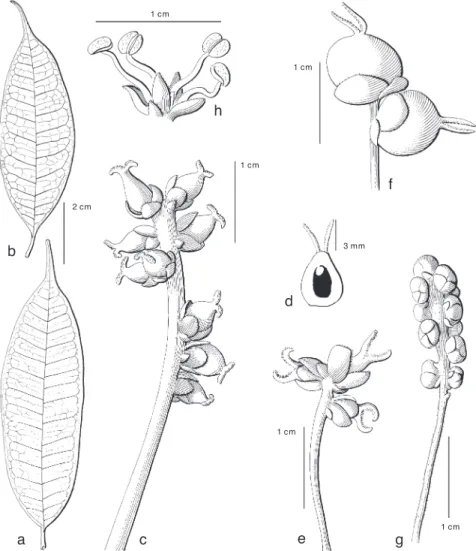
Streblus pendulinus (Endl.) F. Muell
Lamina narrowly elliptic to elliptic to subovate to narrowly ovate (or to subrhombic) or linear, 2–8(–15) cm, margin of lamina dentate to denticulate, at least two teeth in upper part of lamina; lateral veins 5-10 pairs, but if the lamina is linear (arrow-leaf-shaped) then up to 30 pairs. Note — For this subspecies, a form with linear laminae and (therefore) numerous lateral veins has been described as var.
Streblus ascendens Corner
Limitations - This section includes a single species and is distinguished by its long spirally arranged leaves. Limitations - This section consists of a single species and is distinguished by the spicate inflorescence, mostly bisexual and the 3-merous staminate flowers.
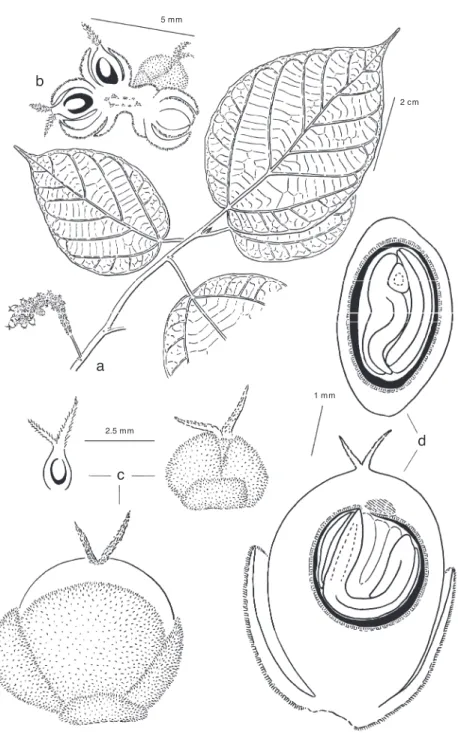
Streblus elongatus (Miq.) Corner
The middle part of the lamina is convex above and the apex of the lamina spinulose-dentate, with 1 or 3 teeth; lamina smooth and margin often spinulosely toothed. The midvein of the lamina is impressed above or ± prominent only in the upper part.
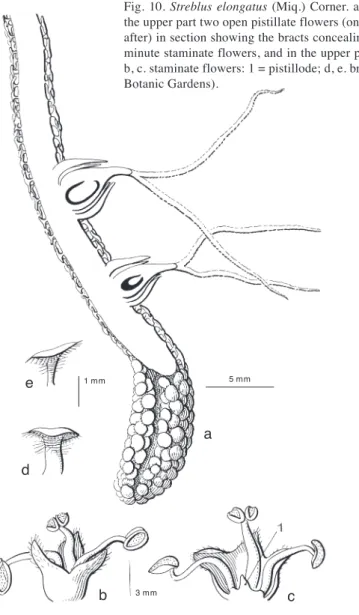
Streblus macrophyllus Blume
Staminate inflorescences axillary, solitary, spicate; peduncle 0.2-0.4 cm long, minutely puberulous; tip 1.5-14 cm long; flowers numerous;. Pistillate inflorescences axillary, solitary, racemose (or one-flowered); stem 0.2-1 cm long, minutely puberulous; flowers (1–)2–10; pedicel 0.5-10 mm long, minutely puberulous; leaf blades 1–2 mm long, minutely puberulous, in fruit the outer 2–4 mm long, the inner 7–10 mm long; ovary c.
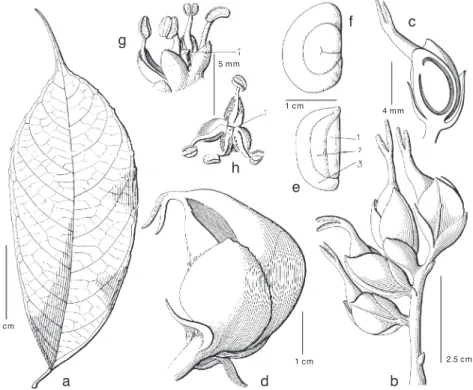
Streblus perakensis Corner
Streblus spinosus (Blume) Corner
Streblus taxoides (B. Heyne ex Roth) Kurz
Distribution — The genus includes nine species in the Old World (not on the African continent) and the New World. Morphology - This genus shows marked morphological similarities to Streblus, but differs in the congenital tepals of the pistillate.
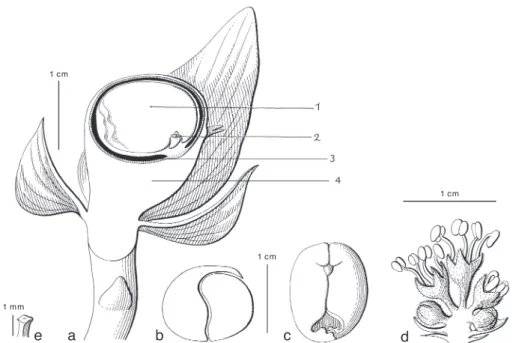
1 mm long, style 1–2 mm long, stigmas 5–15 mm; bracts connate at the base, ovate to subulate, 0.5-1 mm long, white densely puberulous to subtomentellose. Inflorescences axillary pistillate, solitary, ripening pendulous fruits; peduncle 1.2–3.5 cm long, puberulous, mostly with a few scattered small bracts; heads discoid, 1–1.5 cm, in fruit up to 3 cm in diameter; involucral bracts in 5 or 6 rows, ovate to narrowly ovate, 3–10 mm long, conspicuously puberulous, fruit-red; numerous flowers; tepals narrowly elliptic to narrowly ovate, c.
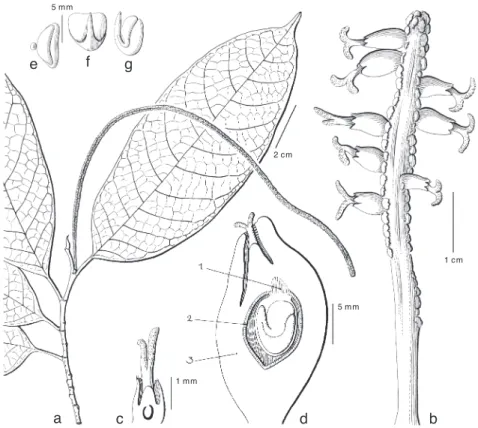
Antiaropsis uniflora C.C. Berg
Pistillate flowers — The lower parts of the perianth of the pistillate flowers surrounding the ovaries are free. but due to the presence of the pair of peltate interfloral bracts in the pistillate inflorescences.
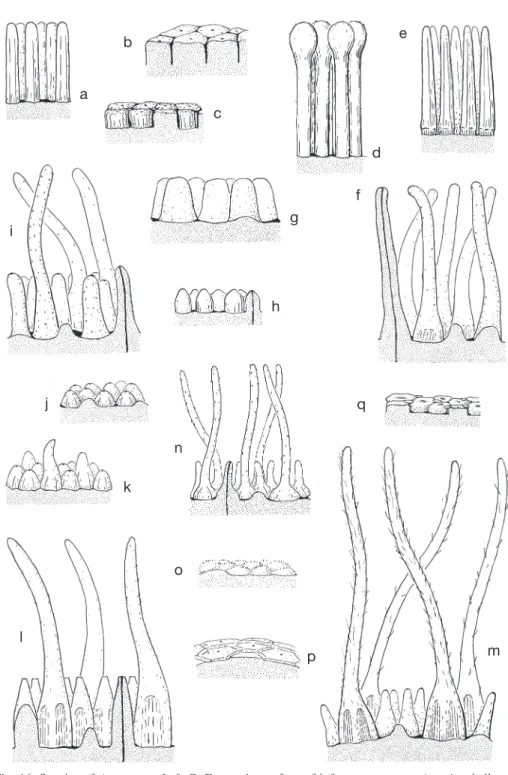
Artocarpus anisophyllus Miq
The presence or absence of interfloral bracts is not consistent in the subgenus and interfloral bracts (or processes) tend to occur in material of the species from the Philippines, but not (or rarely) elsewhere within the species range. When young, the lamina may not (yet) have petiolulate segments, but segments broadly attached to the 'rachis', a feature sometimes retained in the mature state.
Artocarpus annulatus F.M. Jarrett
Twigs with leaves 3–7 mm thick, ± densely strigil brown- lose to pinnate (or also hirtellous to subhirsute), often scabridulose, drying brown. Pistillate flowers axillary, solitary; peduncle 1-4 cm long, dense brown, puberulous; head subglobose to ellipsoid; perianth tubular, puberulous brown, apex ± convex, aperture surrounded by a rim; stigma simple; inter-floral bracts peltate, apical part 0.3-0.4 mm diam., radially appressedly puberulose.
Artocarpus elasticus Reinw. ex Blume
The upper surface of the lamina of specimens with such inflorescences is often smooth, but it can also be scaly. Artocarpus tamaran, which shares with A. the presence of elongated interfloral processes and the uneven surface of the staminal inflorescence.
Artocarpus excelsus F.M. Jarrett
The similarities, the nature of the differences and the slight overlap in the areas of distribution provide arguments to reduce A. Artocarpus tamaran, which shares with A. the presence of elongated interfloral processes and an uneven surface of the stamen inflorescence and is distinct enough to be maintained as a separate species.
Artocarpus heterophyllus Lam
Infructescences ellipsoid, up to 7 by 4 cm, covered with the tips of 1–2 mm long pyramids of the perianth; fruits ellipsoid, c. Inflorescence axillary axillary or paniculate on slender leafy twigs, solitary; peduncle 1–5.5 cm long, slightly white conspicuously puberulous, apex dilated at a lip; heads cylindrical to spicate or subellipsoid, 2.5–7 by 0.8–2.8 cm; perianth tubular 0.7-1 mm long, apex 2-lobed, slightly puberulous; stamen 1.5–2 mm long, anther c.
Artocarpus hispidus F.M. Jarrett
Infructescences subglobose, 4-5.5 cm diam., covered with 5-6 mm long cylindrical tips of perianths; fruits ellipsoid, 1-1.3 cm long. The proposed study should also include A. A. melinoxylus Gagnep.), which in vegetative character largely matches the continental material delineated above, differing only in the shorter spikes of the pistillate flowers, which are up to 4 cm long (or up to 6 mm long according to Gagnep)., Fl.
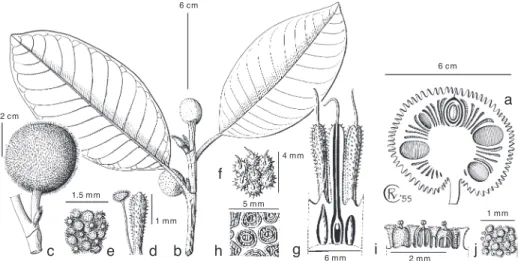
Artocarpus integer (Thunb.) Merr
Infructescences narrowly ellipsoid to ellipsoid to ovate (to subglobose), 15-35 by 10-15 cm, covered with 1.5-3 mm long, cylindrical to conical to pyramidal apices of the perianths; fruits ellipsoid, approx. The type sheet includes material with fronds of the present species together with material without such indumentum belonging to A.
Artocarpus kemando Miq
Pistillate inflorescences axillary, solitary (or in pairs); peduncle 1–4 or 0.3–0.8 cm long, brown velvety; head ellipsoid to ovate, sometimes subtended by scaly bracts about 0.5–1 mm long;. 2 mm long (concave) cushion-shaped (or pyramidate to 3 mm long) tops of the perianth; fruit ellipsoid, c.
Artocarpus lanceifolius Roxb
Material classified under the latter always has bases shorter than 1 cm and the lamina tends to have a rounded top. Note — The material from Borneo, recognized by Jarrett (1959) as a distinct subspecies, differs slightly from that of Thailand, Sumatra and the Malay Peninsula, in the usually more slender petioles and persistent interfloral bracts of the pistillate inflorescence.
Artocarpus lowii King
Artocarpus obtusus F.M. Jarrett
Artocarpus odoratissimus Blanco
Staminate inflorescences axillary, solitary; stem cm long, brown apparently puberulous to hispidulous or hirtelous to subhirsute, ± scabrous;. Pistillate inflorescences axillary, solitary; stem 5-14 cm long, dense brown, apparently puberulous to hispidulous, or hirtelous to subhirsute, ± scabrous;.
Artocarpus rigidus Blume
Staminate inflorescences axillary, solitary; petiole 0.2–1 cm long, brownish strigillose, ± scabrous; head posterior to subglobose, 1.2–2 cm diameter; perianth tubular, c. Infructescences subglobose, 4–9 cm diameter, covered with 3–8 mm long, cylindrical tops of the perianth; fruit ellipsoid, 1.2-1.5 cm long.
Artocarpus sarawakensis F.M. Jarrett
Pistillate inflorescences axillary, solitary; stem 0.8–3(–4) cm long, brown strigillose, ± crusty; head ellipsoid to subspherical (to depressed-spherical); perianth tubular, hispidulous to muricular, the apex ± convex; Infructescences subglobose or ellipsoid, 3-5 cm diameter, covered with cushion-shaped 2-3 mm long tips of the perianths; fruits ellipsoid, c.
Artocarpus sepicanus Diels
The single collection from Sumatra differs from the (five examined) collections from Sarawak in the absence of long hairs on the leaf shoot, petiole and midrib of the lower surface of the lamina. The hairs on the stipules are shorter and the dense, short brown indumentum of the stem is intermingled with longer, posterior, uncinate hairs.
Artocarpus sericicarpus F.M. Jarrett
Artocarpus tamaran Becc
Inflorescences staminate axillary, solitary; peduncle 3.5-5.5 cm long, puberulose brown; head cylindrical, 6–7 by 1–1.5 cm, tubercular with pillow-like processes 2–3 mm high covered by dark brown hairs;. Infructescent ellipsoid, up to 10(–14) by 5(–8) cm, covered with conical to cushion-shaped perianth tips 3–4 mm long, interspersed with elongate processes; fruits ellipsoid, c.
Artocarpus teijsmannii Miq
Infructescences cylindrical to club-shaped, up to 8.5 by 4.5 cm, covered with 1-2 mm long and pyramidal, or sometimes up to 6 mm long and subular, apices of the perianths (in some infructescences none, in others few or numerous) up to 6 mm long subulate processes; fruits ellipsoid, c. Subulate processes (1–2 mm long) are present in staminate inflorescences of some collections, but in those made in New Guinea the flowers are intermixed with peltate bracts.
Artocarpus treculianus Elmer
The base of the layer is often ± uneven, possibly related to the distinct arrangement of the leaves. Almost as distinctive are the spots (wax?) of the glands on the midrib above the base and in the axils of the lateral veins of the lower surface of the lamina.
Artocarpus fulvicortex F.M. Jarrett
Artocarpus glaucus Blume
Leafy twigs 1.5–4 mm thick, (thin) whitish to brownish hairy, smooth, drying pale to dark brown. Distribution — Australia (Northern Territory); in Malaysia: Sumatra, Malay Peninsula, Borneo, Java, Lesser Sunda Islands (Flores, Sumba, Roma), Moluccas (Tanimbar Islands).
Artocarpus gomezianus Wall. ex Trécul
Leafy twigs 2–4 mm thick, sparsely whitish compressed puberulous, smooth, pale to dark brown when dried. Staminate inflorescence axillary, solitary; petiole 5-15 mm long, minutely white puberulose; head obovate to round, 10–15 mm in diameter; perianth 2- or 3-parted, c.
Artocarpus lacucha Buch.-Ham
Bottom surface areas are sometimes small in the Malay Peninsula, more often further north. In Borneo, the base of the lamina is sometimes peltate (with a narrow strip of lamina tissue connecting the two sides of the base of the lamina).
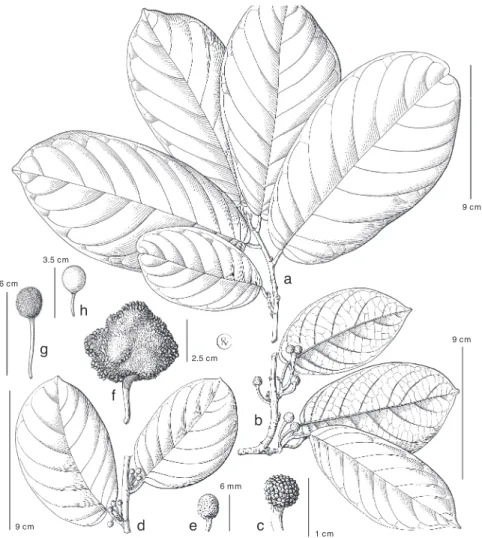
Artocarpus longifolius Becc
The petiole epidermis in this form sometimes falls off, while rarely in the forms treated above. Lower surface of lamina ± puberulose to densely brownish hirtellous, partly with jocinate hairs; Mid, lateral and tertiary veins mostly ± impressed above.
Artocarpus nitidus Trécul
One of the collections from Peninsular Malaysia (FRI 6941) is evident in its up to 1 cm long stem. The material from Solomon Islands differs somewhat from New Guinea material in the hairs on the midrib above, which are all straight and point towards the tip of the lamina instead of being partially uncinate and backward.
Artocarpus reticulatus Miq
The persistent inflorescences are occasionally borne on short shoots on the older tree: see Van Royen 3591 (Vogelkop). Collections with similar indumentum have been made in northern and eastern Borneo (eg Endert 3191 and Paie & Yeo S 38380) and can be referred to the 'borneensis' form.
Artocarpus rubrovenius Warb
Artocarpus subrotundifolius Elmer
Pistillate inflorescences axillary, solitary; stem 2–7 (?) cm long, brown short-velutinous; head subglobose; stigma simple; interfloral bracts peltate, the apical part 0.3-0.5 mm diameter, puberous, caducous. The species can be recognized by the large lamina with the lateral veins frequently forked or branched from the edge.
Artocarpus tomentosulus F.M. Jarrett
Note - The species is characterized by the dense small indumentum on the leaf twig, petiole, lower surface of the lamina and petiole. The inflorescences, at least the pistillates, are borne on short shoots with distinct buds, consisting of several persistent stipules.
Artocarpus vrieseanus Miq
Morphology - The discoid and convoluted inflorescences are reminiscent of the type found in some members of the Castilleae and the species Dorstenia, in which genus one of the species has been described. Minute elevations of slightly different indumentum between the flowers of pistillate inflorescences may also represent such bracts, but rather rudimentary.
Inflorescences unisexual (rarely bisexual), single in leaf axils, pedunculate, with 3–8 large basally attached bracts at the base of the head, interfloral bracts with free tips similar to the free parts of the petals, disk-shaped to cushion-like, shaped like sharks. Morphology – The flowers and bracts of the pistillate inflorescence are free in contrast to those of the related genera Artocarpus, Hullettia and Parartocarpus.
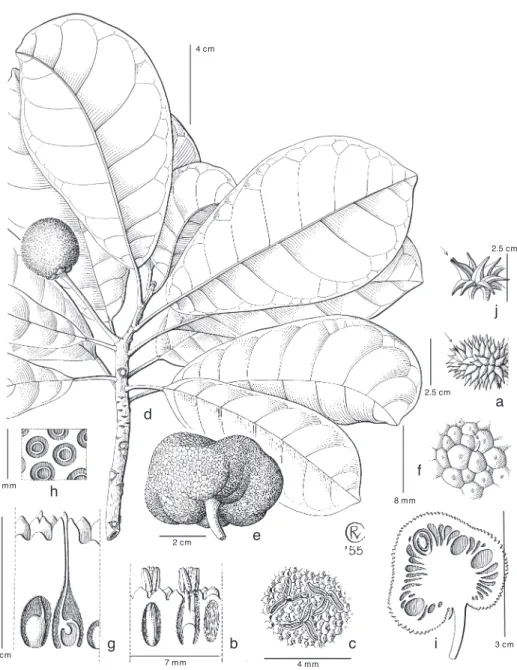
Prainea scandens King ex Hook.f
The plagiotropic branches are abscised; the base of the shed branches is conical and leaves a depression in the stem. In the Neotropical genera, involucres of unbricated bracts of the pistillate flowers cover the outer surface of the receptacle.
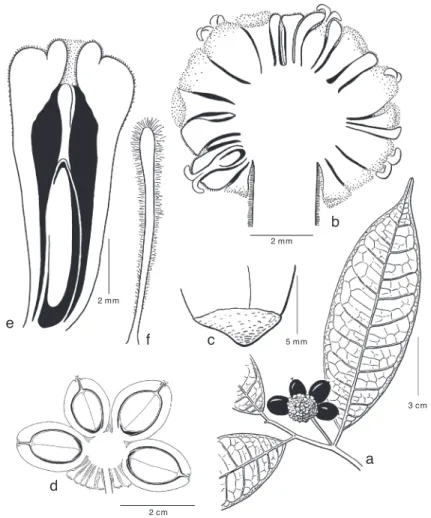
Castilla elastica Sessé
Undersurface of the lamina with patent hairs on the lateral veins or also on the midrib; fruiting perianths are only basally fused. Pistillate inflorescences sessile or petiolate, with an involucre of several basally attached, overlapping bracts; flowers 1, sometimes 2; perianth 4-lobed, the lower part runs into the flower base; ovary adnate to the embedded part of the perianth; stigmas 2.
Antiaris toxicaria Lesch
Staminate flowers often with reduction in the perianth (to absent) and the stamens (to one), pistillodes mostly absent. Morphology - The stem is characterized by bisexual inflorescences with one or more pistillate flowers in the center and the staminate flowers mostly peripheral.
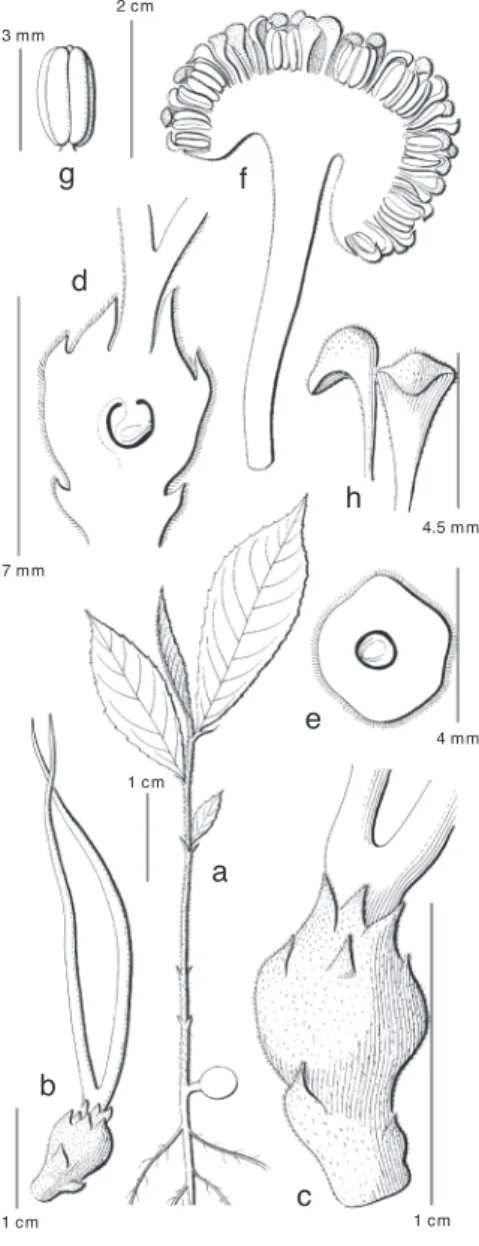
Dorstenia contrajerva L
Pistillate flowers in the central part of the inflorescence, 1–numerous; perianth tubular, with only the apex free from the surrounding flowers; ovary free; stigmas 1 or 2, filiform to band-shaped, equal or unequal. Distribution — The genus consists of 105 species, 46 in the Neotropics, 1 in Asia (Sri Lanka, W-India), 58 in continental Africa extending to Madagascar, the Arabian Peninsula and Socotra.
